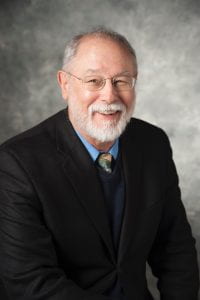SMU NEWS– Congratulations to Robert Gregory, a geologist in SMU’s Roy M. Huffington Department of Earth Sciences. He has been named an American Association for the Advancement of Science (AAAS) Fellow for distinguished contributions to his field, particularly for his research on how the earth’s dynamic systems and his teaching on how the solar system and the cosmos impact the world around us.
 The AAAS Fellows honor is one of the most distinguished honors within the scientific community.
The AAAS Fellows honor is one of the most distinguished honors within the scientific community.
Gregory will be inducted into the organization later this year as part of the 2022 class of AAAS Fellows. Election as an AAAS Fellow is an honor bestowed by scientific peers upon the group’s members for scientifically or socially distinguished efforts to advance science or its applications.
“I’m humbled by this recognition from AAAS,” Gregory said. “I joined SMU as the Faculty director of the Stable Isotope Laboratory continuing work started in Australia on early Earth rocks from the Pilbara of Western Australia (the ancient seawater problem); paleo-polar climates of Victoria, Australia, when it was just breaking away from Antarctica ~100 million years ago during a time of a global greenhouse, and vein formation in the Lachlan Fold Belt, Victoria, during burial and deformation at a convergent plate boundary.
“The latter work brought me to New Zealand and back to Oman where I worked with my Australian colleague Professor David Gray on how the leading edge of the formerly stable Arabian continental margin was disrupted in the plate reorganization at 70-100 million years that eventually led to the later collision, firstly of India with Asia followed by the ongoing collision of Arabia with Asia, recently manifest by the large earthquakes in Turkey.”
He adds, “Most stable isotopes have their origins in stars and some, like deuterium, the stable isotope of hydrogen, formed during the Big Bang itself, within tens of minutes after the origin of the Universe. The oxygen isotopes of magmas from the ocean basins and from rocks returned from the Moon tie its origin to the early history of the Earth distinguishing them from other solar system objects. Stable isotope ratios on ancient seafloor rocks demonstrate the role of plate tectonics in controlling the chemistry of the oceans on geologic time scales (millions of years), an example of a slow geochemical cycle, important for environment stability and the evolution of life on Earth. The carbon isotopes of atmospheric carbon dioxide show an imprint of fossil fuel burning over the last 170 years, an example of a fast geochemical cycle going out of balance. Humans have become a geologic force.
“Being a small part of the 75-year post World War II effort to understand how stable isotopes trace the continuum of history from the Big Bang to us is extremely rewarding,” Gregory said.
Gregory came to SMU in October 1989 after serving as a Senior Lecturer at Monash University in Melbourne, Victoria, Australia. He earned his Bachelor of Arts degree in Physics/Earth science from the University of California, San Diego, and received his Ph.D. in Geology from the California Institute of Technology.
Outside of SMU, Gregory conducted geological work in Australia, New Zealand, the Sultanate of Oman, Saudi Arabia, and the United Arab Emirates while leading generations of SMU students into the Grand Canyon.
Read the full article: https://www.smu.edu/News/Research/Robert-Gregory-named-AAAS-Fellow